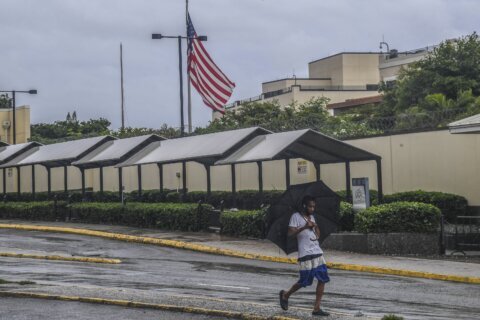
Lahore, Pakistan’s cultural capital and a city rich in history, has been engulfed by an unprecedented air pollution crisis that has left thousands of residents struggling with respiratory issues, eye irritation, and worsening chronic health conditions. For the past several days, air quality in the city has reached dangerous levels, with pollution levels hitting a record high that has triggered widespread concern and action from local health officials and environmental activists.
According to data from the Lahore Smog Monitoring System, air quality levels in Lahore have consistently exceeded 400 on the Air Quality Index (AQI) in the past week, far surpassing the threshold for hazardous air quality (AQI 300). The situation has made Lahore one of the most polluted cities in the world, alongside other South Asian metropolises like New Delhi and Dhaka.
Health Crisis Unfolds
Doctors in Lahore’s hospitals have reported a sharp increase in patients presenting with breathing difficulties, asthma attacks, chest infections, and other pollution-related health issues. Local health authorities estimate that over 5,000 residents have sought medical attention since the pollution spike began. Hospitals are overwhelmed, with emergency rooms packed with people suffering from acute respiratory distress, particularly among children, the elderly, and those with pre-existing lung conditions.
“We are seeing a significant rise in the number of people suffering from severe air pollution effects, including exacerbated asthma, respiratory infections, and even heart attacks,” said Dr. Sara Ahmed, a pulmonologist at Lahore General Hospital. “The air is thick with toxic particles, and it’s having an immediate, detrimental impact on public health.”
Causes Behind the Crisis
Experts attribute Lahore’s alarming pollution levels to a combination of factors, including crop-burning in surrounding rural areas, vehicle emissions, industrial waste, and construction dust. The region’s weather conditions, with low wind speeds and cooler temperatures during the winter months, also trap pollutants in the air, making the smog worse.
Crop-burning, a common agricultural practice during the harvest season in neighboring Punjab, is one of the primary culprits. Farmers set fire to rice stubble and other leftover crops, releasing vast amounts of smoke and particulate matter into the atmosphere. This has contributed significantly to Lahore’s smog crisis, with winds pushing the toxic smoke into the city.
Government Response and Public Outcry
In response to the crisis, local authorities have stepped up measures to control pollution, including shutting down brick kilns, imposing restrictions on construction activities, and advising residents to stay indoors. Lahore’s Traffic Police have also been monitoring the city’s congested streets to reduce emissions from vehicles, while several schools have announced temporary closures to protect children from the toxic air.
Despite these efforts, many residents and environmental organizations feel that the response is insufficient to address the scale of the problem. Activists have called on the government to invest more in long-term solutions, such as promoting cleaner technologies, enhancing public transportation, and addressing the root causes of agricultural burning.
“We need a complete overhaul of the way we manage our air quality,” said Arif Khan, an environmental activist and member of the Pakistan Environmental Protection Society. “This isn’t just about temporary fixes; it’s about investing in sustainable solutions that reduce emissions and protect public health in the long run.”
Lahore’s Cultural Heritage at Risk
While the pollution crisis has primarily been framed as a public health emergency, it also poses a threat to Lahore’s cultural heritage. The city, known for its historic architecture, gardens, and monuments, faces the risk of permanent damage to its iconic structures. High levels of pollutants, particularly sulfur dioxide and nitrogen oxides, can corrode buildings, monuments, and artwork, further eroding the city’s rich cultural legacy.
“Air pollution is a silent destroyer of our heritage,” said Shama Rizvi, an art conservator working in the city. “The fine particulate matter that is in the air can damage delicate materials, accelerating the decay of Lahore’s ancient mosques, palaces, and the stunning frescoes in the Badshahi Mosque. If this persists, the impact on our cultural landmarks will be irreversible.”
Looking Ahead
The pollution crisis in Lahore is not an isolated event, but rather a symptom of broader environmental and climate challenges facing Pakistan and the entire South Asian region. As the effects of climate change worsen, cities like Lahore will continue to face severe air quality challenges, endangering both public health and cultural heritage.
The path forward will require coordinated efforts from both government and civil society to address the underlying causes of pollution and invest in cleaner, more sustainable urban development. Until then, residents of Lahore continue to brace for the health hazards of a toxic and increasingly unbreathable city.
Global Spotlight on Lahore’s Smog
As Lahore grapples with its pollution crisis, the city has also drawn international attention. The World Health Organization (WHO) has raised alarms about air pollution’s growing health risks in Pakistan, especially among vulnerable populations. Experts warn that urgent, large-scale policy reforms are needed to prevent Lahore from facing even worse air quality in the future.
“Lahore is facing an air quality emergency. The government must take immediate action to curb emissions and provide the public with clear guidance on how to protect themselves from this dangerous smog,” said Dr. Jane Smith, a WHO environmental health specialist.
As Lahore’s iconic skyline fades into a haze of pollution, the city’s residents, activists, and policymakers must confront an uncomfortable truth: the fight for clean air is far from over, and without immediate action, the cultural heart of Pakistan may find itself gasping for breath.
